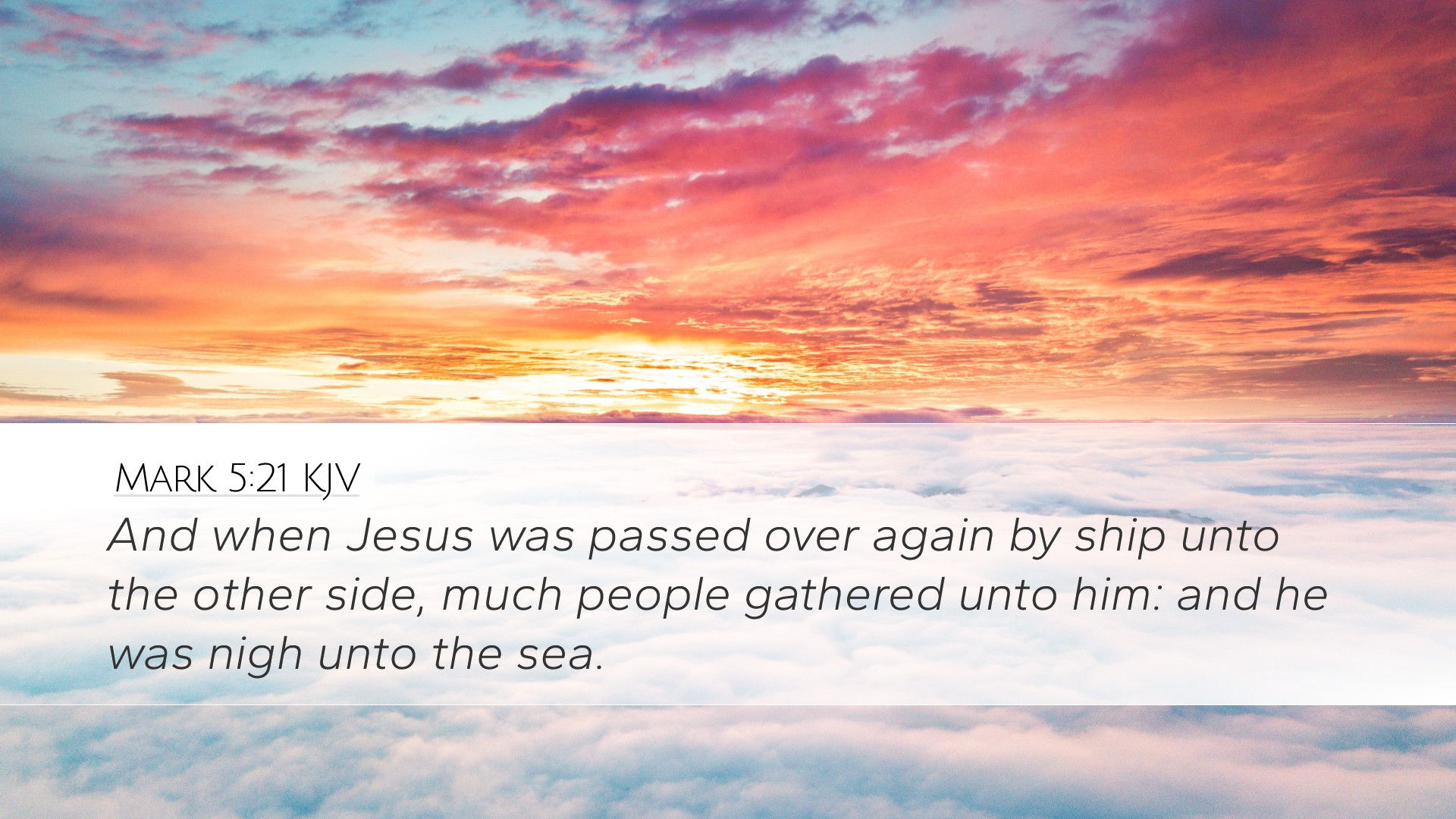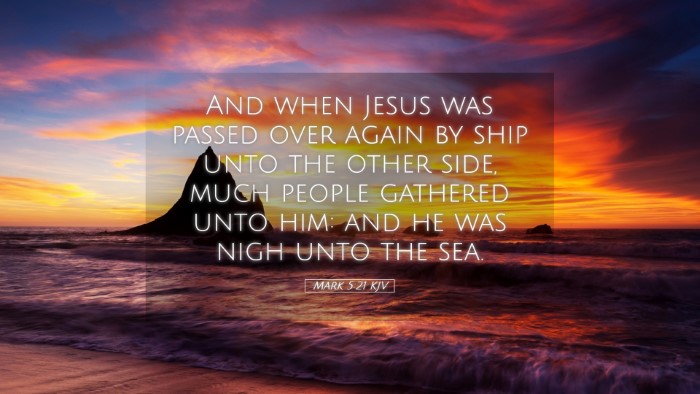Commentary on Mark 5:21
Introduction
Mark 5:21 reads: "And when Jesus had crossed over again in the boat to the other side, a great multitude gathered to Him; and He was by the sea." This verse marks a pivotal moment in the Gospel of Mark, showcasing Jesus' ministry and the increasing popularity He was gaining among the people. This commentary synthesizes insights from renowned public domain commentaries to provide a thorough understanding of this passage.
Contextual Analysis
This verse follows an account of Jesus' previous miracle of calming the storm and healing the demoniac, which illustrates His authoritative power over nature and evil. The transition here signifies not only the geographical movement of Jesus back to the Jewish side of the Sea of Galilee, but also the thematic return to His ministry among the people.
The Significance of the Great Multitude
As Jesus arrived back on the shore, a great multitude gathered around Him. This gathering reflects several important aspects:
- Popularity of Jesus: His miraculous works and teachings had drawn many to Him. Even amidst the challenges of understanding His teachings, the people were eager to see and hear Him.
- Desperation and Need: The multitude's presence suggests that they came seeking hope, healing, and deliverance in their lives. The significance of personal need cannot be overstated.
- Preparation for Miracles: This multitude sets the stage for the subsequent miraculous events, particularly the healing of Jairus’ daughter and the woman with the issue of blood.
Theological Implications
This passage invites deeper theological reflection on several key themes:
- Christ's Accessibility: The act of Jesus crossing back to the other side emphasizes His willingness to engage with humanity. Unlike many leaders of His time, who separated themselves from the masses, Jesus continually meets the people where they are.
- The Nature of Discipleship: The gathering of the multitude illustrates the necessity of community in responding to Jesus’ call. Discipleship is often nurtured amidst communal seeking.
- Messianic Authority: The multitude can be viewed as a response to Jesus' Messianic identity. They not only recognize Him as a teacher but as one who possesses power over illness, demons, and death.
Historical Perspectives
Commentators like Matthew Henry and Albert Barnes note that Jesus' fame began to spread far and wide, resulting in a mixed response from the crowds of believers, skeptics, and those simply curious. This atmosphere of tension surrounding His ministry plays an essential role in how we interpret the subsequent miracles.
Henry emphasizes that while the crowd’s enthusiasm is notable, it may not reflect a profound understanding of Jesus’ true mission—often the masses sought solely for physical healing rather than spiritual redemption.
Application for Today
The gathered multitude serves as an analogy for the modern church. Just as the crowd sought Jesus, congregations today must likewise prioritize seeking Christ with earnestness and acknowledgment of their need for Him.
Moreover, pastoral leadership can glean insights regarding welcoming and ministering to the diverse needs of the flock. The nature of Jesus' ministry was one of compassion and attentiveness to the needs of the people—an important model for modern ministry.
Conclusion
Mark 5:21 encapsulates a moment of pivotal significance in Jesus’ ministry. The multitude's gathering is not just a backdrop but a dynamic element that sets the tone for the miraculous events that follow. Understanding the significance of this encounter helps pastors, theologians, and students comprehend the continual call of Jesus to engage with those in desperate need of healing, hope, and salvation.


